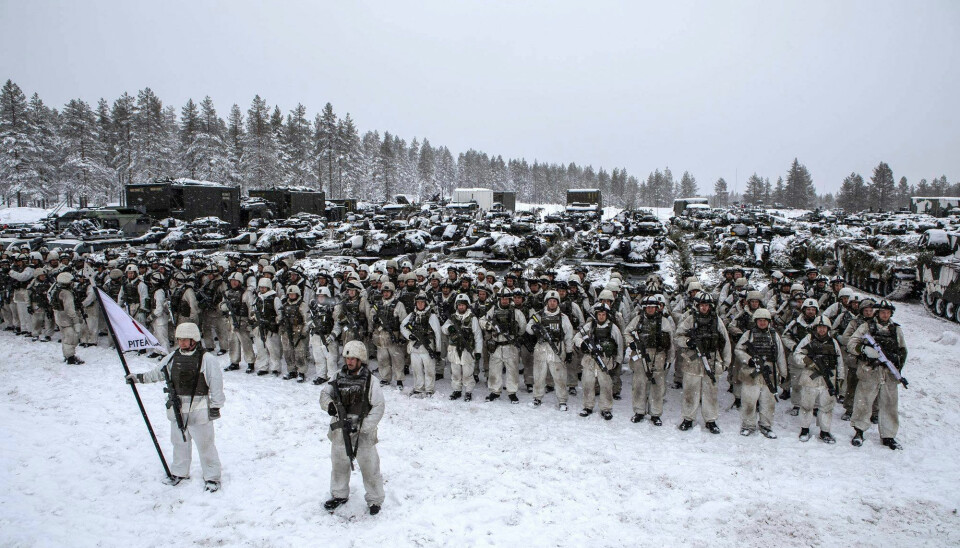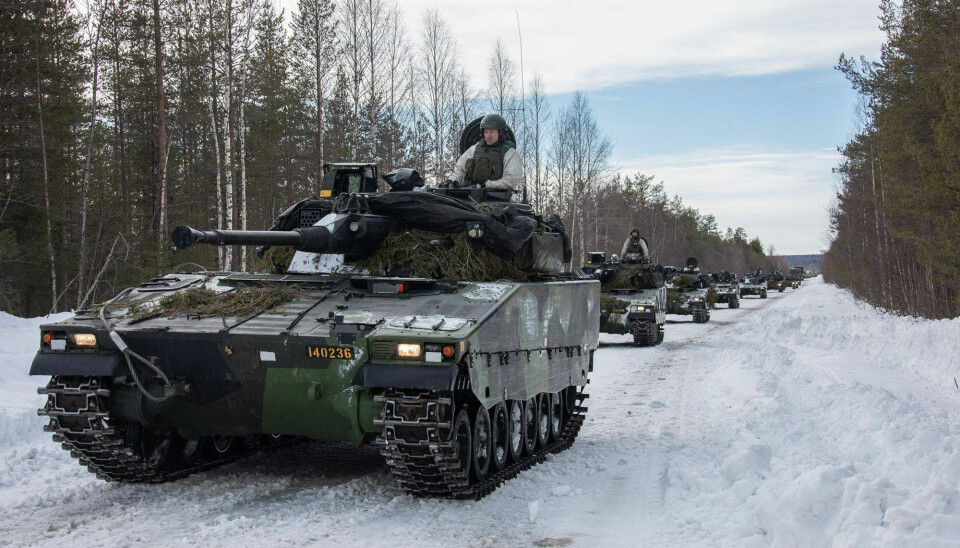
Sweden beefs up defence forces in the North
"An armed attack against Sweden or our allies can not be excluded," the Government in Stockholm underlines. The new NATO member now boosts spending on armament, preparedness and manpower, including two new mechanised brigades for subarctic warfare.
"Russia is levelling cities, attacking civilian infrastructure and treating the civilian population like legitimate targets. The Swedish Government is now building up total defence capabilities to meet these threats."
The new Swedish Total Defence Resolution reflects an increasingly troublesome national security situation and is a milestone in the country's defence development. The document, which is the first of the kind since Sweden's entry into NATO, outlines historical military investments.
In the course of the next six years, an additional 170 billion Swedish kronor (€14,79 billion) will be injected in the military defence forces, along with 37,3 billion kronor in civil defence.
Already in 2028, defence expenditures will reach 2.6 percent of GDP.
“This is a powerful Defence Resolution that will give the total defence more strength and better balance," Defence Minister Pål Jonson says in a comment.
According to the government in Stockholm, a Russian armed attack can no longer be excluded.
"The Government, like the Defence Committee, takes note that an armed attack against Sweden or our allies can not be excluded," the document reads.
Although the Russian army has lost a significant part of its capacities during the war in Ukraine, the medium and long-term threats against Sweden are not reduced.
"Russia has significantly increased production of military equipment, further lowered its threshold for use of military violence, takes high political and military risks and is ready to take high losses," the more than 170 pages document says about the nearby country.
"Russia still has capacity to undertake operations with its air force, navy, missile forces or nuclear weapons against Sweden and its adjacent areas," it adds.
The report also warns against Russian special forces, hybrid threats, cyber attacks and covert influence operations.

An important priority area for the Swedish defense investments is the northern parts of the country. By 2028, two so-called subarctic mechanised brigades are to be operational.
One of them will be developed in Boden, the other in Skövde, the Swedish Defence Ministry confirms.
"They will get better subarctic capabilities and better endurance," says Johan Hjelmstrand, Press Spokesman for Defence Minister in a comment to the Barents Observer.
Investments will be made in ammunition, renovation and modification of combat vehicles and tanks.
Mobility between the Nordic countries is crucial, and a motorized rifle battalion will be added to each brigade, Hjelmstrand explains.
“The ability to move larger amounts of material, vehicles and personnel between the Nordic countries is becoming more important and therefore the government is also investing in increased host country support. We can see this through the plan for military mobility that Sweden adopted this year together with the DCA agreement with the USA and the new Nordefco vision,” he says.
Cooperation with neighboring Norway and Finland has been developed over a long time and will be now be guided by operational planning within the frames of NATO, Hjelmstrand explains.
Sweden will also take the lead in a new NATO force in northern Finland.
Sofia Kalmeborg from the Defence Staff underlines to the Barents Observer that the development of the structure is political processes.
“Sweden has been given the task to be so-called Framework Nation for the force, but it is worth pointing out that the international contributions to the planned Forward Land Forces in the North Calotte region are based on a political process; The armed forces provide military advice and do not influence the composition directly,” the press secretary at the Defence Staff says,


















